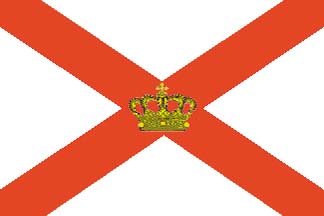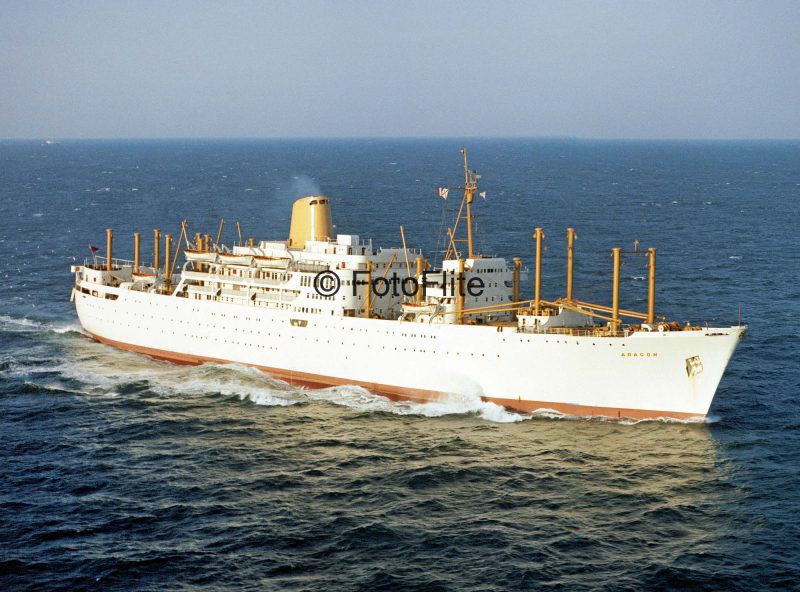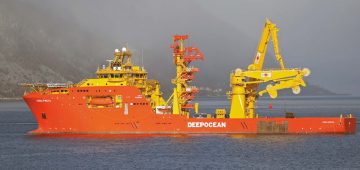The Royal Mail Line ‘Three Graces’
 This trio of Royal Mail Line split superstructure white hulled passenger and cargo ships was completed in 1959/60, but had only eleven years of service in the South American and New Zealand trades, followed by remarkable conversions into car carriers to give another eleven years of service with Hoegh-Ugland Auto Liners of Oslo. They were 18 knot motorships completed by Harland & Wolff Ltd. at Belfast as Yard numbers 1594, 1595 and 1596 to replace both Royal Mail Line’s former ‘A’ Class sailings from Southampton and the ‘Highland’ class sailings from London to Buenos Aires. They represented the largest single order for the Belfast yard in post-war years at a combined contract price of £12.6 million. The rationale behind retaining the split superstructure of traditional Royal Mail Line and Nelson Line passenger and cargo ships was that a detached long flying bridge would improve the visibility astern for the navigating officers. More importantly, it permitted the hatch for number three hold to be in the centre of the large cargo spaces, as the chilled beef carcasses were suspended from numerous deck head rails in the low headroom insulated spaces.
This trio of Royal Mail Line split superstructure white hulled passenger and cargo ships was completed in 1959/60, but had only eleven years of service in the South American and New Zealand trades, followed by remarkable conversions into car carriers to give another eleven years of service with Hoegh-Ugland Auto Liners of Oslo. They were 18 knot motorships completed by Harland & Wolff Ltd. at Belfast as Yard numbers 1594, 1595 and 1596 to replace both Royal Mail Line’s former ‘A’ Class sailings from Southampton and the ‘Highland’ class sailings from London to Buenos Aires. They represented the largest single order for the Belfast yard in post-war years at a combined contract price of £12.6 million. The rationale behind retaining the split superstructure of traditional Royal Mail Line and Nelson Line passenger and cargo ships was that a detached long flying bridge would improve the visibility astern for the navigating officers. More importantly, it permitted the hatch for number three hold to be in the centre of the large cargo spaces, as the chilled beef carcasses were suspended from numerous deck head rails in the low headroom insulated spaces.
The good looking trio were known as ‘The Three Graces’, in the manner of the representation of three beautiful daughters of the god Zeus as painted by Jean-Baptiste Regnault and sculpted by Antonio Canova. Their beauty, charm and joy were legendary and they were present at banquets to entertain and delight the guests of Aphrodite (Venus), the goddess of love and beauty. Royal Mail Line gave this trio of combination passenger and cargo ships traditional ‘river’ or ‘Spanish provinces and cities’ names e.g. Asturias, Alcantara, Almanzora and others with Edwardian style interiors, but a case could also be made for the names to commemorate the legendary female Amazon warrior tribe of Greek mythology, and the women of the Spanish provinces of Aragon and Arlanza in northern Spain. Arlanza is an ancient Spanish province, the river Arlanzon today running through the main town of Burgos in Castilla y Leon province.


Amazon was the third ship of that name in the Royal Mail Line fleet, Aragon was the second of that name, and Arlanza was the second of that name. The first Amazon had the shortest career ever in the company after completion at Blackwall at the end of 1851. She sailed on her maiden voyage from Southampton on 2nd January 1852 but sank on fire off Portland Bill a day later with the loss of 36 passengers and 68 crew members, including all of her officers and two midshipmen. Amazon (2) was of 10,037 grt and was a combination passenger and cargo ship built by Harland & Wolff Ltd. at Belfast in 1906 with accommodation for one thousand passengers. She was torpedoed and sunk by U52 on 15th March 1918 off the north coast of Ireland while outward bound from Liverpool, all were saved, and the U boat was destroyed by an escort. The first Aragon was her sister and she was torpedoed and sunk on 30th December 1917 while operating as a troopship at Alexandria with the loss of 610 troops and crew members. She had entered the harbour but found no berth and was ordered out into the roadstead where she was promptly sunk, together with a destroyer that was rescuing survivors. The first Arlanza of 15,044 grt had a much longer career after completion at Belfast in 1912 with accommodation for 1,390 passengers in three classes. After a career including service as an Armed Merchant Cruiser (AMC) she was broken up at Blyth at the end of 1938.

Subscribe today to read the full article!
Simply click below to subscribe and not only read the full article instantly, but gain unparalleled access to the specialist magazine for shipping enthusiasts.





Comments
Sorry, comments are closed for this item